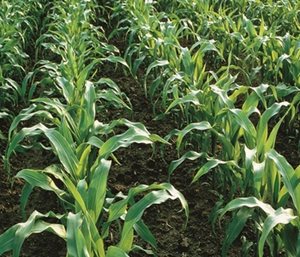May 2019 Key Discussion Points
May 06, 2019

1. Fungicide Application on Small Grains – The wheat and rye around the area is reaching boot stage to head emergence. Now is the time to decide on spraying for disease control. While reports of Stripe Rust and Leaf Rust on wheat have been light or minimal, the weather conditions are ideal for a Rust infestation. Due to Pre-Harvest Intervals, many fungicides must be applied before or at flowering. Flowering typically begins within 3-5 days of full head emergence, and flowering takes about 7-10 days to occur throughout the head.
2. Planter Setting and Planting Technical Issues – Just a quick reminder that we have staff available to help guide you through planter setting. If you are having technical problems, call our Precision Ag Specialist. Getting proper seed placement is key in reaching your best possible ROI.
3. Stand Evaluation – Stand Evaluation at emergence is a key step in maximizing yield. Timely stand counts can help identify large skips, insect or disease damage to the seed, and possibly detect the need to replant if something has gone wrong. Timely replanting can have a huge impact at harvest. While taking counts, look for doubles (two plants where there should be one) – this may indicate your planter needing some service.
4. Early Season Tissue Tests – Taking early season tissue samples of spring planted crops can aid in making important management decisions during key growth stages of the crop. Like staves in a barrel, the most limiting nutrient will limit the total yield potential of the crop by limiting the good that other nutrients can provide. Knowing what is lacking may mean increasing yield by several bushels, therefore increasing total ROI from all inputs. Ag21 Scouting customers receive a complementary tissue test included with each field.
5. Early Post Emerge Weed Control – Weed control during early growth of a crop is critical. Not only will weeds compete for moisture and nutrients, they can also compete for space and light interception. For example, a corn crop will rotate its leaf orientation if is senses weeds through light reflection from the sun. If the corn rotates it orientation to align with the row rather than across the row, light interception is affected for the rest of the season. This can also allow more weed competition due to taking longer to reach full canopy over the exposed row.
Plan to apply your second shot of residual product at 14-21 days after planting. Overlapping residuals help prevent weeds from ever emerging in the crop. Products containing Atrazine on corn should be applied before the corn reaches 12” tall. Most products can also be tank-mixed with a fungicide. Fungicide applications at this stage can help with early season disease suppression and overall plant health.
6. Fallow Weed Control – Recent weather has brought favorable conditions for weed emergence in fallow ground. Applying herbicide when a weed is small and susceptible is key to getting great weed control.
2. Planter Setting and Planting Technical Issues – Just a quick reminder that we have staff available to help guide you through planter setting. If you are having technical problems, call our Precision Ag Specialist. Getting proper seed placement is key in reaching your best possible ROI.
3. Stand Evaluation – Stand Evaluation at emergence is a key step in maximizing yield. Timely stand counts can help identify large skips, insect or disease damage to the seed, and possibly detect the need to replant if something has gone wrong. Timely replanting can have a huge impact at harvest. While taking counts, look for doubles (two plants where there should be one) – this may indicate your planter needing some service.
- How to take stand counts on 30” Row Spacing
- Measure 17’ 5” of Row
- Count the plants in that distance, count doubles as 1 plant
- Repeat in multiple areas of the field
- Take the Average Number of Plants times 1000 for Total Plants/Acre
4. Early Season Tissue Tests – Taking early season tissue samples of spring planted crops can aid in making important management decisions during key growth stages of the crop. Like staves in a barrel, the most limiting nutrient will limit the total yield potential of the crop by limiting the good that other nutrients can provide. Knowing what is lacking may mean increasing yield by several bushels, therefore increasing total ROI from all inputs. Ag21 Scouting customers receive a complementary tissue test included with each field.
5. Early Post Emerge Weed Control – Weed control during early growth of a crop is critical. Not only will weeds compete for moisture and nutrients, they can also compete for space and light interception. For example, a corn crop will rotate its leaf orientation if is senses weeds through light reflection from the sun. If the corn rotates it orientation to align with the row rather than across the row, light interception is affected for the rest of the season. This can also allow more weed competition due to taking longer to reach full canopy over the exposed row.
Plan to apply your second shot of residual product at 14-21 days after planting. Overlapping residuals help prevent weeds from ever emerging in the crop. Products containing Atrazine on corn should be applied before the corn reaches 12” tall. Most products can also be tank-mixed with a fungicide. Fungicide applications at this stage can help with early season disease suppression and overall plant health.
6. Fallow Weed Control – Recent weather has brought favorable conditions for weed emergence in fallow ground. Applying herbicide when a weed is small and susceptible is key to getting great weed control.